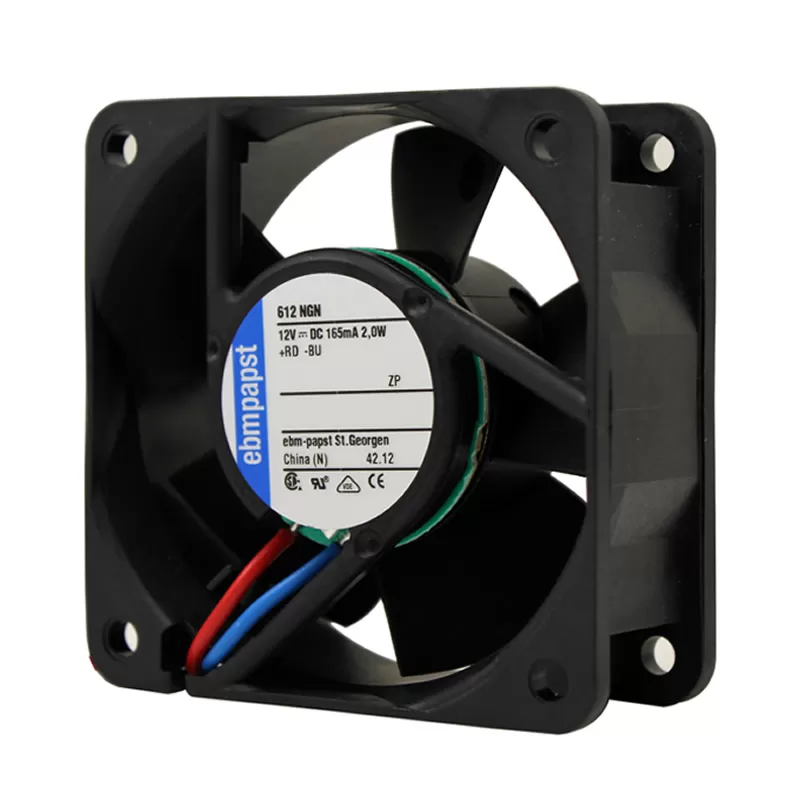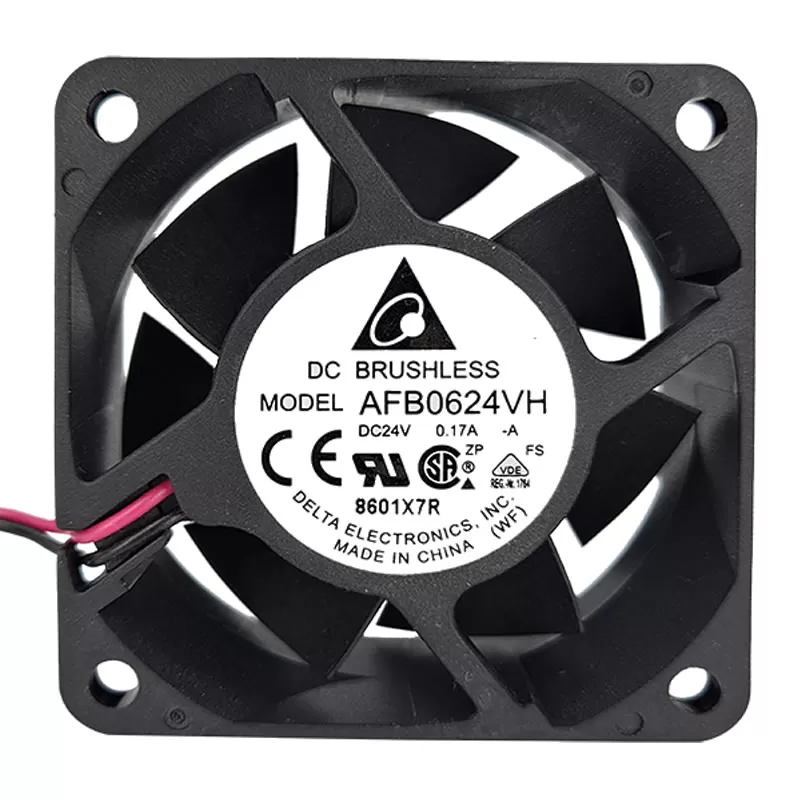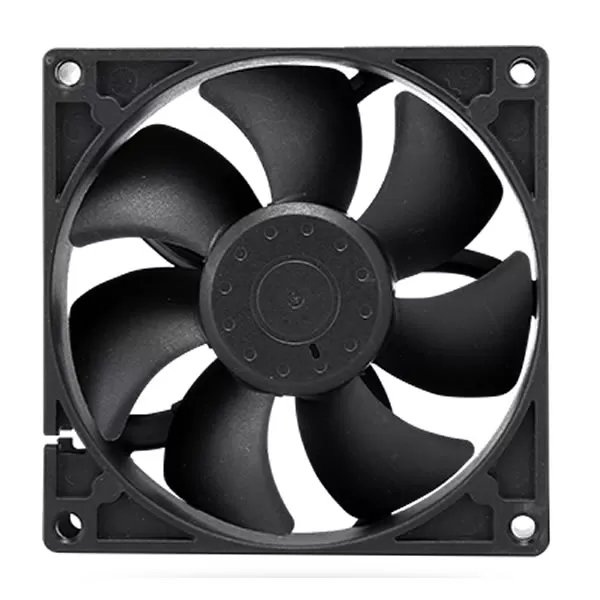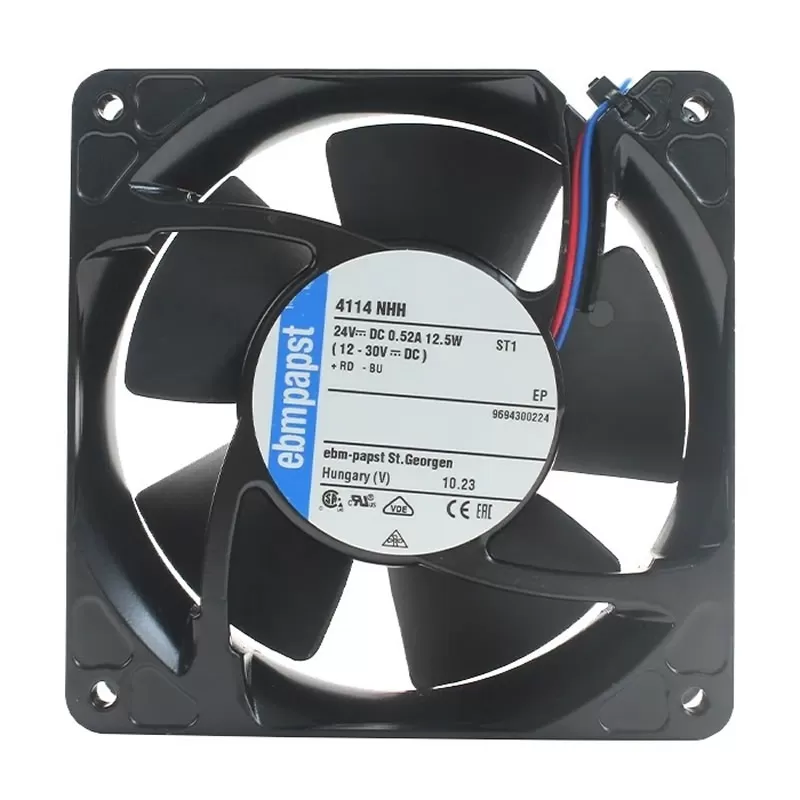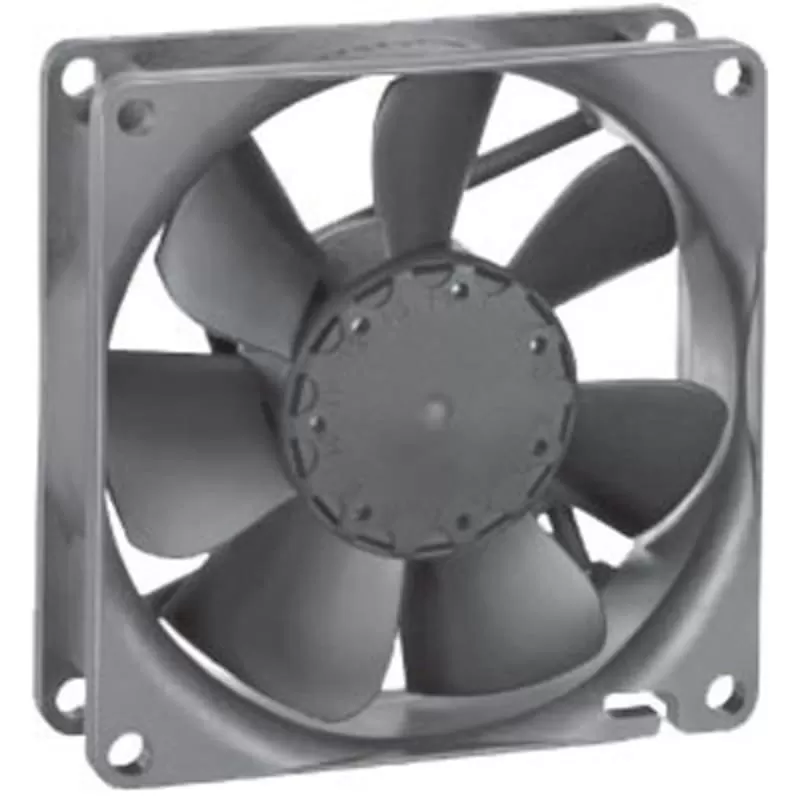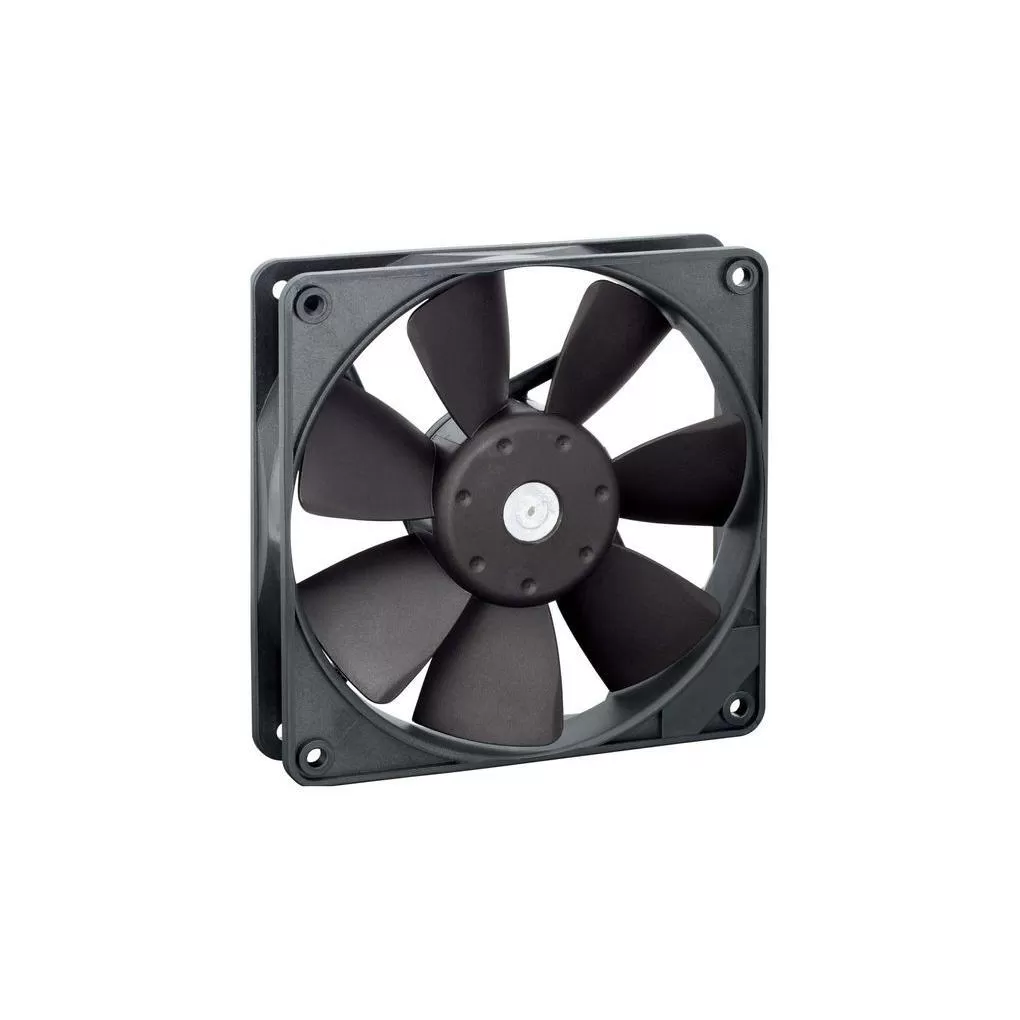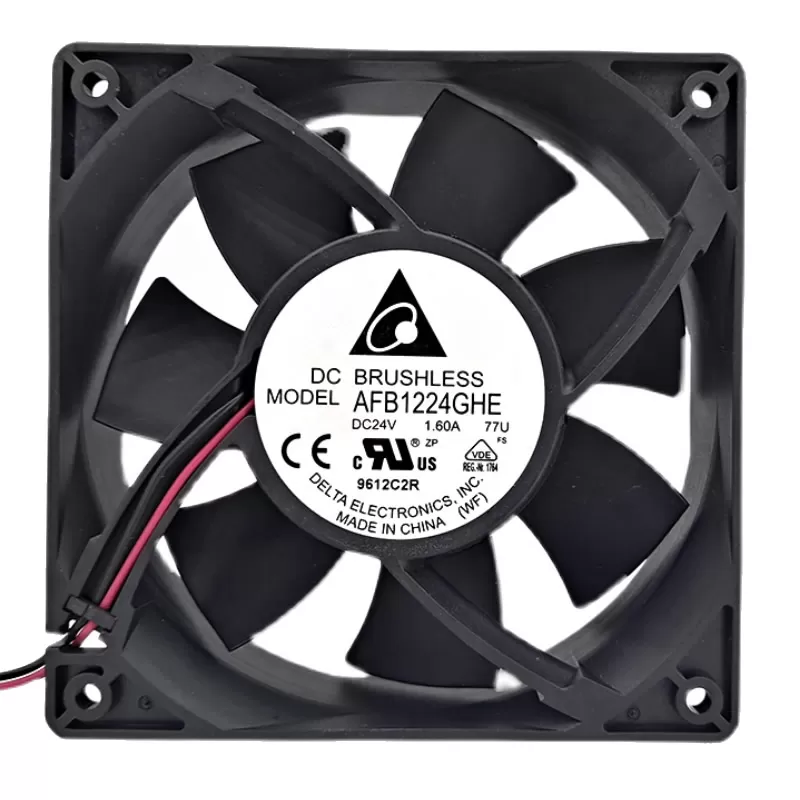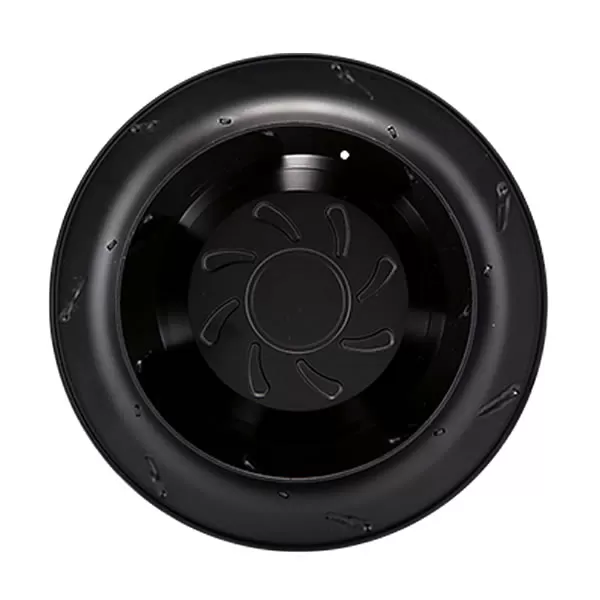Fan bearings serve as pivotal components in determining a fan’s lifespan, acoustic performance, and operational reliability. Classified broadly into contact-based and non-contact designs, each bearing type embodies distinct mechanical principles and engineering trade-offs. This technical exposition delves into their structural mechanics, performance metrics, and application paradigms, offering a comprehensive guide for informed (technical selection).
1. Core Classification and Mechanical Principles
1.1 Contact Bearings: Lubricated Mechanical Interface
(1) Sleeve Bearing (Bushing Bearing)
- Design & Operation:A monolithic design where the rotating shaft interfaces with a cylindrical sleeve, relying on lubricating grease or oil to mitigate sliding friction. Early iterations feature open architectures, while modern variants incorporate oil seals to prevent lubricant egress and contaminant ingress.
- Technical Profile:
- Advantages: Cost-effective construction, low starting torque, and moderate noise levels (20–35 dBA).
- Limitations: Susceptible to lubricant degradation from thermal cycling or dust accumulation, resulting in a service life of 20,000–40,000 hours; suboptimal stability at high rotational speeds.
- Application Domain: Budget-oriented applications such as consumer electronics cooling (e.g., PC case fans) and general-purpose ventilation systems.
(2) Ball Bearing (Rolling-Element Bearing)
- Structural Mechanics:Comprises inner/outer raceways, 3–8 precision-grade steel balls, and a retaining cage, facilitating low-friction rolling contact. Double-lip rubber seals provide IP54-equivalent protection against particulate intrusion and grease depletion.
- Performance Attributes:
- Strengths: Exceptional mechanical efficiency (friction coefficient: 0.001–0.005), extended service life (50,000–100,000 hours), and robust high-speed capability (up to 15,000 RPM).
- Challenges: 30–50% higher production cost than sleeve bearings; potential for harmonic noise (30–45 dBA) at maximum RPM due to ball-raceway impacts.
- Typical Use Cases: Mission-critical systems including server rack cooling, industrial machinery ventilation, and automotive powertrain thermal management.
(3) Rifle Bearing (Grooved Sleeve Bearing)
- Enhanced Lubrication Design:Features helical oil grooves on the bearing inner surface, leveraging centrifugal force during rotation to maintain a continuous lubricant film between shaft and sleeve. Utilizes semi-sealed construction with dust shields.
- Engineering Balance:
- Benefits: 30% longer lifespan than standard sleeve bearings (30,000–50,000 hours) due to improved lubricant distribution; noise profile comparable to sleeve bearings (25–35 dBA).
- Trade-offs: Moderate resistance to contaminants; lubricant viscosity remains a critical factor in high-temperature operation (>80°C).
- Market Positioning: Mid-tier applications such as mid-range PC CPU coolers and household appliance ventilation.
(4) Hydrodynamic Bearing (Fluid-Dynamic Bearing, FDB)
- Hydrostatic Lubrication Principle:Employs a hydrodynamic wedge effect to generate an oil film that hydrostatically supports the shaft, minimizing metal-to-metal contact. Fully sealed housing with labyrinth seals ensures zero lubricant leakage.
- Performance Benchmarks:
- Superior Features: Friction coefficient of 0.002–0.004, service life up to 80,000 hours, and ultra-quiet operation (20–30 dBA) due to dampened mechanical vibrations.
- Design Complexity: Requires precision manufacturing for optimal oil film thickness; slightly higher cost than traditional sleeve bearings.
- Target Applications: Premium silent cooling solutions for audio-visual equipment, medical devices, and high-end computing systems.
1.2 Non-Contact Bearings: Frictionless Operation
(5) Magnetic Levitation Bearing (MagLev Bearing)
- Electromagnetic Suspension Technology:Utilizes active or passive magnetic fields to levitate the rotor shaft, eliminating physical contact entirely. Integrated Hall-effect sensors enable real-time position feedback and control.
- Cutting-Edge Performance:
- Key Advantages: Infinite theoretical lifespan (100,000+ hours), sub-25 dBA noise signature, and ultra-high-speed capability (25,000+ RPM).
- Implementation Challenges: Complex control electronics, 5–10x higher cost than conventional bearings, and sensitivity to external electromagnetic interference.
- Niche Applications: Aerospace cooling systems, high-reliability server farms, and industrial turbo-machinery.
(6) Ceramic Hybrid Bearing (Ceramic Ball Bearing)
- Advanced Material Integration:Incorporates silicon nitride (Si₃N₄) ceramic balls in a traditional ball bearing architecture, offering superior hardness (85–90 HRA) and lower density (3.2 g/cm³ vs. 7.8 g/cm³ for steel).
- Material-Driven Advantages:
- Technical Edge: Exceptional thermal stability (operating temperature: -200°C to +1,200°C), 40% lower rolling resistance, and 50% longer lifespan than all-steel bearings in corrosive environments.
- Practical Limitations: Higher material cost and brittleness necessitate careful handling during installation.
- Specialized Use Cases: High-temperature industrial ovens, precision medical equipment, and automotive engine auxiliary cooling systems.
2. Quantitative Performance Comparison
| Technical Parameter | Sleeve Bearing | Ball Bearing | Rifle Bearing | Hydrodynamic Bearing | Magnetic Levitation | Ceramic Hybrid Bearing |
| Friction Mechanism | Sliding Friction | Rolling Friction | Hydrodynamic Lubrication | Fluid-Film Lubrication | Electromagnetic Levitation | Ceramic Rolling Contact |
| Mean Time Between Failures | 20k–40k hours | 50k–100k hours | 30k–50k hours | 60k–80k hours | 100k+ hours | 70k–90k hours |
| Acoustic Profile (dBA) | 25–35 | 30–45 (Hi-Speed) | 25–35 | 20–30 | <25 (A-weighted) | 25–35 (Comparable to Ball) |
| Maintenance Requirement | Periodic Relubrication | Sealed-for-Life | Annual Lubrication Check | No Maintenance | No Maintenance | No Maintenance |
| Relative Cost Index | 1.0 (Base) | 1.5–2.0 | 1.2–1.5 | 2.0–2.5 | 5.0–8.0 | 3.0–4.0 |
| Operating Temperature Range | -10°C to +70°C | -20°C to +120°C | -15°C to +80°C | -30°C to +100°C | -40°C to +150°C | -200°C to +1,200°C |
| Ingress Protection Rating | IP20 (Open) | IP54 (Sealed) | IP44 (Semi-Sealed) | IP55 (Fully Sealed) | IP54 (Magnetic Core) | IP54 (Sealed Housing) |
| Speed Capacity (RPM) | ≤6,000 | ≤12,000 | ≤8,000 | ≤10,000 | ≤25,000 | ≤15,000 |
3. Engineering Selection Criteria
(1) Cost vs. Performance Trade-offs
- Economical Solutions: Opt for sleeve or rifle bearings in non-critical applications, paired with annual maintenance protocols to address lubricant degradation.
- High-Reliability Standards: Specify sealed ball bearings for 24/7 operation; consider ceramic hybrids for applications requiring both high speed and corrosion resistance.
(2) Environmental Constraints
- Thermal Extremes: Ceramic hybrid bearings are ideal for >100°C environments; magnetic levitation bearings offer superior performance in cryogenic setups.
- Dusty/Wet Conditions: Prioritize fully sealed hydrodynamic or ball bearings with IP55/IP65 ratings to prevent contaminant ingress.
(3) Acoustic Design Requirements
- Ultra-Quiet Systems: Hydrodynamic bearings provide the best noise-lifespan balance; magnetic levitation bearings are reserved for applications requiring sub-25 dBA operation (e.g., audio recording studios).
4. Advanced Engineering Considerations
- Lubricant Selection: For contact bearings, synthetic oils (e.g., polyalphaolefin, PAO) offer better high-temperature stability than mineral oils, extending service life by 20%.
- Vibration Analysis: Use FFT (Fast Fourier Transform) to monitor bearing health; characteristic frequency patterns (e.g., 1x, 2x, 3x rotational speed) indicate early-stage wear in ball bearings.
- Seal Design: Labyrinth seals outperform lip seals in high-dust environments, reducing bearing failure rates by 35% according to ISO 15243 standards.
5. Conclusion
Fan bearings represent a classic engineering compromise between cost, reliability, and environmental adaptability:
- Contact Bearings dominate mainstream applications, with hydrodynamic designs emerging as the gold standard for balanced performance in mid-to-high-end systems.
- Non-Contact Technologies redefine performance frontiers in extreme conditions, though their adoption remains limited by cost and complexity.
- Proactive Maintenance: Regular contamination control and lubrication management are critical to unlocking the full lifespan potential of contact-based bearing designs, particularly in harsh operational environments.
By aligning bearing selection with specific application requirements and adhering to best-in-class maintenance practices, engineers can optimize fan performance while minimizing total cost of ownership.

